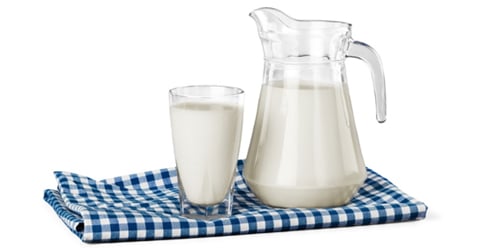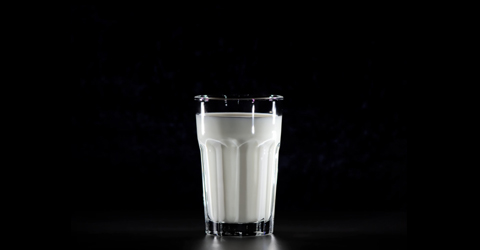

True athleticism isn’t about being stronger or faster—it’s about longevity. Some shine bright and fizzle out quickly, while others can keep going for years. It’s not about how good you are in your prime, it’s about how long you can stay in your prime. Many professional athletes have discovered that a dairy-free diet is key to enhancing their performance and maintaining their peak for years past their expected retirement age. These leaders are moving the needle toward plant-based fuel in sport, but the misconception surrounding dairy and performance nutrition still lingers. Whey is still the most commonly used protein supplement by athletes and trainers according to a just-released paper, “Whey protein supplementation and its potentially adverse effects on health: a systematic review.” [1] Per the review’s title, whey protein is not the healthy muscle-maker that marketing makes it out to be.
What Is Whey Protein?
Whey is one of the proteins found in cow’s milk and other dairy products. If you recall the nursery rhyme, Little Miss Muffet, you may remember that she “sat on a tuffet eating her curds and whey.” Whey is the liquid byproduct of the cheesemaking process. To make whey-based protein supplements, the liquid whey is processed into a powder form. During this process, some of the lactose and fat is removed to render a product that’s about 90-95 percent protein.
Does Whey Protein Have Side Effects?
By analyzing a collection of whey protein studies, review authors found parallels between the findings that presented several adverse effects of whey protein consumption. These included increased acne, liver toxicity, increased oxidative stress, kidney problems, gut issues, and the expression of anger. In regards to dosage, authors found that 40 grams or more of whey protein a day resulted in these adverse effects.
Whey Protein: Kidney and Liver Function
Even during short-term use, whey protein consumption was found to negatively affect kidney function. In a 2011 study, those who consumed whey protein during the experiment experienced increased plasma urea, urinary volume, and urinary calcium excretion while the pH of urinary citrate decreased. Essentially, this indicates an increased taxing of the kidneys, which marks the first step in kidney disease.
In regards to liver function, those who live generally sedentary lives are most affected. Researchers found that when not exercising, the proteins from the whey supplement ended up going to the liver for processing—instead of being used for muscle synthesis. Over time, sedentary participants showed signs of early liver injury. While whey protein is heavily used by athletes, many non-athletes consume it as well. Whey protein can be found in meal replacement shakes and other diet-related food products that promise weight loss or increased muscle mass through food alone. This becomes an issue because consumers are led to believe that whey is akin to a superfood, when in reality it could damage their liver over time.
Whey Protein and the Microbiome
While physical activity can increase the “good bacteria” in your gut, supplementing with whey protein can counteract those positive effects. A 2018 study that looked at athletes who specifically supplemented with whey protein found a decrease in the participant’s beneficial bacteria and an increase in the harmful bacteria. When the balance shifts and one’s microbiome contains too much “bad bacteria,” one can experience uncomfortable symptoms such as severe and chronic bloating, constipation, stomach pain, gas, and other gastrointestinal distress. Athlete or not, no one wants to contend with these awful feelings on a day-to-day basis.
Whey Protein and Acne
It’s not uncommon to see an adolescent bodybuilder with a face full of red, bulbous acne. Many young gym-goers fall into the whey protein mentality, and as a result, they exacerbate their teenage skin issues. Unfortunately for whey protein consumers, the breakouts often don’t stop after puberty. Researchers suspect that this correlation may be due to the fact that milk and milk products contain IGF-1, a growth-promoting hormone positively associated with “the increase of estrogen factors linked to the appearance of acne.” While whey protein does not contain IGF-1, the products that contain whey protein typically do. Even powdered protein supplements often contain milk powder or other derivatives. It’s not necessary to invest in expensive and skin-damaging treatments to cure severe cases of acne. For most, it’s as simple as putting down the milk.
Conclusion
Based on their findings, the authors of this systematic review concluded that the consumption of whey protein was most associated with negative side effects when taken in “high” dosages (40 grams or more) over an extended period of time. However, what constitutes as high is easily within the realm of typical for most athletes. One scoop of Muscle Milk protein powder contains 25 grams of whey protein. If an athlete’s routine is to put a generously rounded scoop of powder into their shaker bottle just once, they would be hovering at the limit. Do this before and after the workout, and take into consideration any whey-based bars or other dairy they consume throughout the day, and they’ve far exceeded the normal amount.
Whey protein is not needed to “get swole,” and it’s not worth risking the side effects. More research is needed, and until then we really don’t know the extent in which whey protein can harm our bodies. The truth is, it could be even worse than these initial outcomes. Those who consume whey protein supplements may not feel the effects now, but given the complications with liver and kidney function, they may fall victim to serious health issues later in life, and not even know it was connected to their whey-consuming, gym-going days.
*This article is reprinted with permission from Switch4Good.
References
- Aragao, Giseli F., et al. “Whey protein supplementation and its potentially adverse effects on health: a systematic review.” Applied Physiology, Nutrition, and Metabolism, 25 July 2020, pp. 1-26. https://www.nrcresearchpress.com/loi/apnm.
Copyright 2024 Center for Nutrition Studies. All rights reserved.
Earn Your Plant-Based Nutrition Certificate
Join over 20,000 students who have improved their health, learned new skills, and even inspired career changes.
Program Overview
- 23,000+ students
- 100% online, learn at your own pace
- No prerequisites
- Continuing education credits
)




